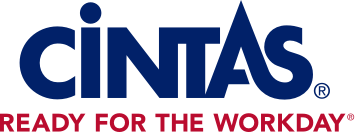Spot the Signs. Stay OSHA Compliant: 7 Heat Stress Prevention Tips
Dizziness, headaches, nausea, shortness of breath, unusually heavy sweating...could you spot the signs of heat stress from your crew?
Working in the heat can be uncomfortable, but it can also put your people and your business at risk. Heat-related incidents can cause project delays and increasingly expensive fines from OSHA for non-compliance.
In some cases, prolonged heat exposure poses serious health risks, and in extreme cases can be fatal. The Bureau of Labor Statistics reported 479 workers in the U.S. died from exposure to environmental heat between 2011-2022, which is an average of 40 deaths per year.
In 2025 alone, regions across the U.S. experienced record-breaking heat waves. Although the weather is unpredictable, you can be proactive in planning and equipping your teams with the right safety precautions for mitigating and managing heat stress.
Here's a few prevention tips to help protect you from the heat.
- Stay hydrated. Encourage employees to drink one eight-ounce cup of water every 15 to 20 minutes, even if they are not thirsty, throughout the workday. Help prevent dehydration by adding electrolytes to your beverages.
- Take regular breaks in cooler areas. The National Institute for Occupational Safety and Health (NIOSH) recommends using work/rest schedules to accommodate for frequent breaks, allowing workers to cool down. Schedule breaks for your team in cool, shaded areas with fans or in air-conditioned spaces. Avoid peak hours when possible and require employees to stop working if they feel discomfort.
- Acclimate workers.Help your employees adjust to working in hot environments gradually over longer periods of time. OSHA suggests that experienced workers follow a regimen of 50% exposure (Day 1), 60% (Day 2), 80% (Day 3) and 100% (Day 4). New employees should start with 20% exposure and increase 20% exposure each additional day.
- Dress for the heat. Avoid layers. There are cooler alternatives to orange safety vests, which add bulk and trap heat. Look for lightweight, moisture-wicking fabrics that enhance breathability and mobility. Some gear, like the Carhartt® color block shirt offer ANSI-complaint visibility without having to sacrifice quality and comfort in extreme temperatures.
- Spot symptoms early. Shift leads, supervisors and team leaders should be trained to recognize early signs of heat illness and check in regularly with their teams during high-risk periods. Encourage employees to speak up when something feels off, and support them with clear protocols, rest breaks and access to hydration. Heat stress symptoms can escalate quickly. Shared awareness is key.
- Train your teams. Educate your entire team on how to recognize symptoms of heat illness, how to administer immediate first aid and when to call 911 and follow emergency response procedures.
- Develop a safety culture. Accountability matters. Create regular protocols to make sure symptoms are monitored, rest cycles are enforced and emergency response programs are in place. Determine who will have oversight and review procedures regularly.
The strongest cultures don’t just follow safety, they model it. Look for the person others naturally listen to on the crew. They may not have “safety” in their title, but their influence can help set the tone and make safe behavior the norm.
Stay informed and compliant
OSHA has extended its National Emphasis Program on Outdoor and Indoor Heat-Related Hazards and can charge stricter penalties for heat-related incidents on the job with some penalties reaching over $16,000 for non-compliance. Make sure you follow the latest OSHA guidelines to avoid injuries to your team and expensive penalties.
Make it easier to spot the signs by identifying the symptoms of heat stress. Download, print and post this checklist on your work site for quick reference.
